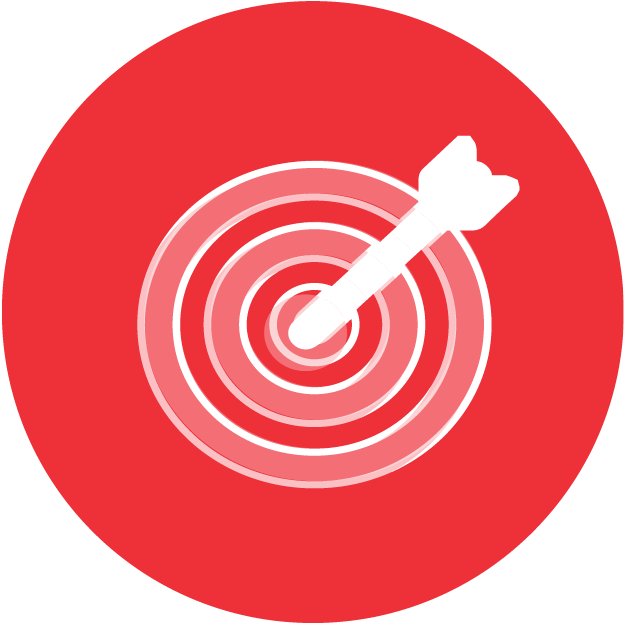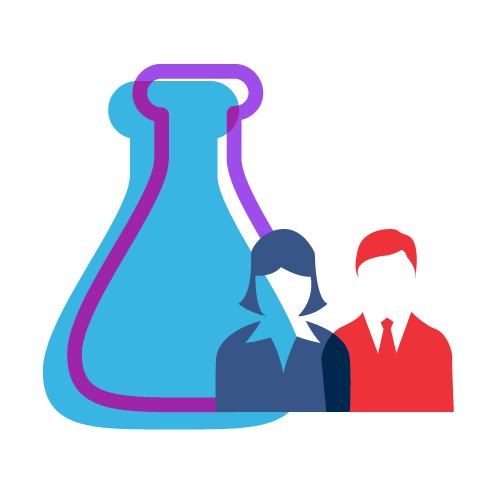As marketers, we’re constantly evaluating whether the latest tools and buzzwords are worth exploring. Will this emerging tactic add a new dimension to your marketing efforts? Or is it one more marketing strategy that doesn’t translate for people working in science and chemical engineering? However, for a boost in ROI, it’s worth exploring account-based marketing (ABM).
What Is Account-Based Marketing?
ABM takes the traditional strategy of maximizing reach and flips it on its head. Instead of trying to put your content and products in front of as many people and businesses as possible, ABM targets a handful of specific accounts to engage with much more personalized campaigns. This approach lets you form deep, long-term relationships with companies that are especially likely to make a purchase, or are strategic for another reason, such as expanding into a new market.
ABM allows you to invest your marketing resources efficiently and creatively, crafting campaigns that focus on the consumers and metrics that interest you most. According to a 2020 benchmark study by the Information Technology Services Marketing Association (ITSMA), 76 percent of companies reported a higher return on investment with ABM compared to other types of marketing.
In this blog, we’ll share tips on where and when ABM is most effective and how to get your pilot project up and running fast.
Three Ways to Implement Account-Based Marketing
Some companies choose to implement ABM programs alongside other marketing tactics, while others pivot to using this strategy exclusively. No matter how ABM fits into your big picture, the steps outlined below will put you on the right path towards marketing directly to high-value accounts.
As Shari Johnston, SVP of Marketing at Radius, told Marketo: “Marketing is no longer a one-way street – you cannot simply shove promotions to your prospects. You need to engage in an active dialogue and ABM lets you do that with unparalleled precision.”

1: Identify Target Accounts
The most foundational aspect of account-based marketing is, of course, the accounts themselves. Defining your audiences will shape the rest of your strategy: the content you produce, the targets of your paid advertisements, and the individual relationships your sales team develops. Key factors to consider include:
Industry – Different industries have different lingo, priorities, and market pressures. Are you focusing on hospitals? Pharmaceutical manufacturers? Renewable energy companies? Think about whether you want to break into new industries or go deeper into the niche where your expertise already shines.
Company size – Larger companies and industry leaders are often higher-value accounts worth targeting, especially when you’re just getting started with ABM.
Specific needs – Target companies that have a clear need for your products or business solutions. If they don’t know it yet, you’ll have to figure out how to make them realize that need first. Content will play an important role here.
Decision timelines – Some companies have shorter purchasing timelines than others due to their structure or the nature of their business. You may want to target some of these fast-buying accounts in order to increase the likelihood of getting purchase conversions early on in your ABM campaign.
Personnel structure – Who are the decision-makers within the organizations you’re trying to reach? Understanding the influencers behind the purchasing process will help you know who to email, invite to webinars, or advertise to on social media. This doesn’t mean you ignore everyone else – you must still focus on brand building with those starting out in their careers, but it will help you prioritize your ABM targets and what type of content gets delivered to them.
ABM creates exciting opportunities for integration and cooperation between your marketing team and your sales team. Ask the sales team for lists of accounts with which they’d like to deepen company partnerships. If you already use a customer relationship management (CRM) system, you can use its data to identify high-value accounts to which you’re already connected. Taking this one step further, you can consider implementing a content marketing software tied to engagement of your sales collateral. A tool like Seismic can show you what accounts are reading the most, even down to scroll depth.
Companies matching your target profiles who have already engaged with your brand are also excellent candidates for ABM. If they are an existing customer or simply aware of your brand, it’s easier to convince them to return to you for other solutions.
Competitor analyses can provide important insights for account targeting as well. Companies that are using competitor products have a demonstrated need for your products and solutions. Furthermore, they are already educated about a company’s role in your industry and may therefore be more receptive to individualized messaging.

2: Craft Custom Content for Each Stage of the Buyer’s Journey
Although most buyers’ journeys tend to follow the same steps of recognition, assessment, purchase, and advocacy, each account will have unique needs and interests that you can capitalize on to draw them further down the marketing funnel. According to Pardot, 69% of buyers in the B2B space even expect companies to anticipate their needs and deliver tailored content.
As you guide target accounts through the buyer’s journey, you’ll need to serve up both short- and long-form content pieces to attract, inform, educate, and persuade them at each step. Here is the type of content you need to develop for important phases:

- Recognition – After you’ve identified some new target accounts that haven’t engaged with your brand yet, you’ll need to create content designed to grab and hold their attention. Find out what topics they tend to engage with, their specific pain points, and devise content that addresses this account’s specific challenges. Consider making educational videos, white papers, or shareable infographics that showcase your company’s expertise and value in those specific areas or use paid media tools to put each piece of content in front of the exact people it’s designed for.
- Assessment – Potential buyers at this stage are trying to determine whether your solutions are a good fit for them. Customize and deliver content that articulates their distinct needs and describes how you can fulfill them. This content can take the form of product announcements, case studies, or promo offer campaigns. Consider building content around how your product or service compares to the competition. Because you’re using an ABM approach, you will already know which competitors are the biggest threat for each of your top accounts.
- Purchase – As individual buyers move through the purchasing and product implementation process, make the experience as smooth as possible for them. Because relationships matter in ABM, provide product demonstrations and coupons related to the merchandise in which they have demonstrated the most interest. Connect them to department-specific information and specialized representatives using presentations and vendor contact forms.
- Advocacy – Remember, ABM is about developing lasting relationships. Continue targeting your key accounts with content even after they have converted into satisfied customers. Remind them why they enjoyed working with you and broaden their exposure to your offerings. Think along the lines of, “Since you purchased this, you might also be interested in these.” But be sure this is personalized and you are indeed promoting related products: marketing something that doesn’t fit your buyer’s needs is a fast way to lose the work you put in developing an ABM strategy. Finally, offer ready-made content that will help them spread the word about their experience with your brand. This can include testimonials, branded brochures, or contributed articles related to their industry and the products they purchased. You never know – these resources might be the key to gaining recognition from another key account within the same industry.
If you have available capacity, try to craft multiple pieces of content for each stage of the buyer’s journey. A tool like Seismic mentioned earlier can give you concrete data around the type of content that’s working, making this easier and easier as you go and give you greater flexibility when tailoring campaigns to different accounts. It will also give you the option to conduct A/B testing to identify what works best for each account type.

3: Invest in Marketing Technologies
If you’re just dipping your toes into the world of ABM, you can start by using various personalization tools on individual platforms to reach your target accounts. Personalized science marketing can involve developing dynamic search ads, custom email campaigns, and even tailored user experience and content on your website.
But the best step is to invest in a complete marketing automation program if you haven’t already. Marketing automation tools will centralize data collection and analysis, allowing you to coordinate and target your ABM campaigns across all of your marketing channels. Furthermore, automation helps your marketing team spend less time on repetitive tasks and create additional bandwidth for strategy and innovation.
Finally, you can continue deepening the partnership between your sales and marketing teams by applying sales intelligence tools in your ABM strategy. These can complement your marketing tools and strategies, drilling down to the day-to-day habits and business interactions of your clients and potential customers.


















